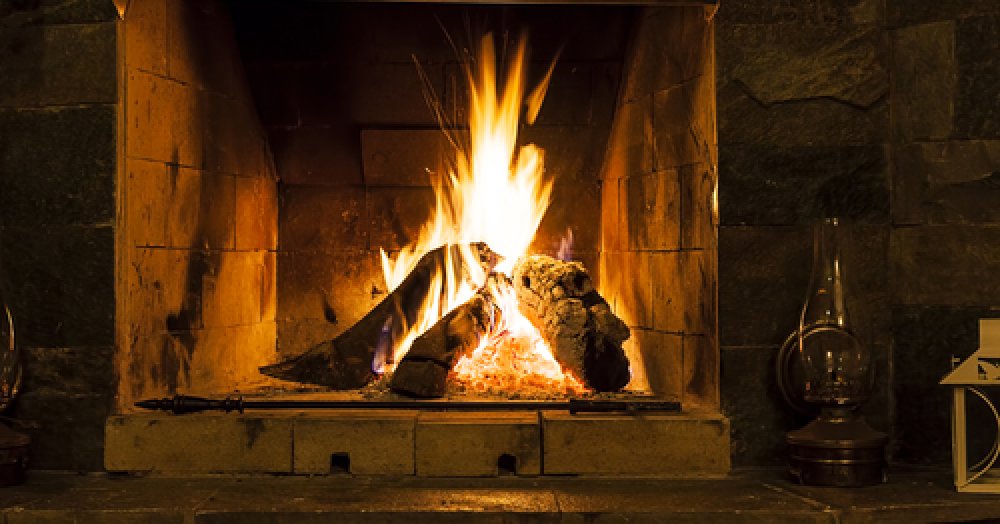Find out how to maintain fireplaces and chimneys in older homes to keep them working safely and efficiently.
Cosy and comforting, an original fireplace alight with burning coals or logs is the ultimate period feature.
But keeping the fireplace burning involves more than just filling the grate with coal or logs. Fireplaces and chimneys require regular attention to work safely and efficiently and, even if they are never used, some routine maintenance will be inevitable.
Fireplaces come in many forms, ranging from the large inglenooks found in early homes, to the cast-iron, marble and wooden surrounds of the Georgian and Victorian eras.
The simplest task is to have the chimney swept by an experienced chimney sweep at least once a year and more often if fires are lit very regularly. Address problems with a smoking chimney promptly, along with any doubts about its structural stability — it will work out cheaper in the long run.
Clean fireplaces from time to time to keep them looking good, and repair individual elements as and when they give out.
Fireplace and chimney maintenance checklist
-
Have chimneys swept regularly by an experienced sweep.
-
Ensure the chimney is safe and in good working order when first used.
-
Check carbon monoxide and smoke alarms frequently. Fit both if they are not already installed.
-
Take into consideration that chimneys are affected by erosion from the inside due to the corrosive effect of flue gases.
-
Always burn dry, well-seasoned wood, otherwise tar deposits might collect within the flue.
-
Inspect chimneys externally as they take the full force of the weather. Look for loose chimney pots, eroded mortar on the stack and defective flashing where chimney and roof meet.
-
In the roof space check for dampness around the chimney stack.
-
When buying a salvaged fireplace take precise measurements to ensure that all the parts fit.
-
Regularly clean the fireplace, clearing ash and debris from the grates.
-
Fill any cracks and gaps that appear in the fireback and surround.
-
Clean and polish decorative elements
Although strong, cast iron can crack when stressed, especially when subjected to intense heat. Blacksmiths are sometimes able to help with repairs, as are fireplace shops and salvage yards
Neglect often takes its toll on many fireplaces and grates, but with a little care and effort they can be brought back to life
Warning signs of chimney maintenance issues
A fire in a fireplace or stove should burn well with smoke and fumes carried away via the flue. Good chimney sweeps will advise on potential problems.
What to look for:
-
Twigs in the hearth from a bird’s nest.
-
Plaster, brick, stone or soot debris coming down the chimney.
-
Poorly burning fires.
-
Smoke entering the room.
-
Recurring sooty smells.
-
Damp patches or staining appearing on chimney breasts
Common chimney and fireplace defects:
Smoky fires
There are several reasons why smoke may gush back into the room instead of rising up the flue. A lack of air is the most common cause. Open fires need at least six changes of air in the room per hour to burn well. To check if poor air starvation is the problem, try opening a door or window – if the smoke clears then the solution is to boost air supply, for example by installing vents or under floor ducts. Smoky fires can also be caused by chimneys getting blocked by debris or nests, hence the importance of regular sweeping. Smoke can sometimes be blown back down by downdraughts where a chimney is too short or overshadowed by surrounding high buildings, trees or hills. Short stacks can be built up or extended by fitting special cowls or pot extenders.
Fire burns poorly
Where a fire struggles to burn, it may be choking on exhaust gases that are not fully dispersed. This may be due to a poor airflow or because of a downdraught. Problems with indoor air supply are common in houses where draughts have been totally sealed up so there’s just not enough air being sucked into the fireplace. The solutions are as described above for smoky fires.
Smoke and fumes leaking into other rooms
Air leaks through defective brick joints can allow toxic smoke and fumes to seep into rooms. Leaks can be traced using smoke pellets. Test for leaks using a smoke pellet bought from a fireplace shop or online. Light the pellet in the hearth and then examine the entire length of the chimney, including the loft space, for smoke leaking out through the masonry. The solution is to have the flue professionally lined.
Chimney fires
Over time, excessive soot and tar can build up on ledges inside a flue, eventually igniting. Flues need to be swept at least once a year to remove combustible soot deposits and blockages, especially if burning green unseasoned wood or peat, which are particularly aggressive fuels.
Birds entering the house
Unprotected chimney pots can allow bird access and nesting. The solution is to fit a special protective bird guard.
Stay on top of the maintenance for your fireplace, and you can warm yourself by it safely for decades to come…
